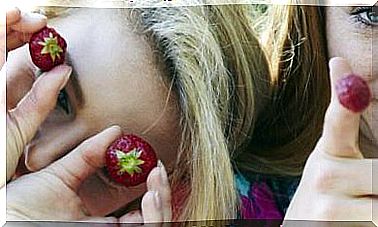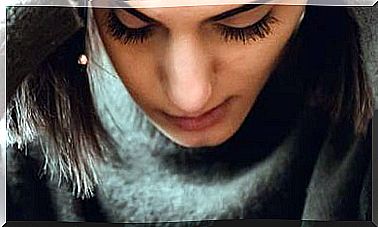How To Prevent And Treat Periodontitis Naturally
Gingivitis can lead to periodontitis, the most common cause of tooth loss. Learn to detect it early and improve it with good habits and natural remedies.

As in our intestines, our mouth has a microbiota with more than 700 species of bacteria. In this microcosm, all aerobic and anaerobic bacteria, fungi and viruses coexist in peace. This is called eubiosis, and when something is disturbed, dysbiosis appears.
Periodontitis are infectious diseases caused by bacteria that live in the oral cavity. These bacteria are very numerous: in one millimeter of saliva there can be up to 100 million of them. Many of them are beneficial, but others are not and are the ones that can cause gum problems.
Prevention is essential to avoid that a slight inflammation of the gum ends up leading to periodontitis. The natural treatment of this periodontal disease includes preventive hygiene measures, with specific rinses to eliminate bacterial plaque; the use of natural remedies with antiseptic and anti-inflammatory properties; and therapies such as photodynamics, which produces a great improvement.
Periodontitis: what is it and what are its symptoms
Periodontitis, also known as periodontal disease, is an inflammation of the tissues that surround and support the teeth caused by a serious infection of the gum. It is a silent pathology, of which we are not aware, because there may be few external signs, and it is also the most common cause of teeth falling out in adults.
In a first phase, periodontitis is nothing more than simple gingivitis, which can affect any age.
Gingivitis, a mild form of periodontal disease, is characterized by redness and inflammation of the gums in the area around the teeth. This problem is totally reversible : as soon as the bacterial plaque is eliminated, the gum returns to its place.
However, sometimes some other symptoms appear like:
- Gum bleeding for no apparent reason and when brushing.
- Sensitivity to cold and heat.
- Change in gum color.
- Gum retraction.
- Increase in the visible part of the teeth.
- Appearance of separation between the teeth.
- Small localized phlegmons.
- Bad breath.
Gingivitis appears when, as the day progresses, bacterial plaque accumulates on the teeth. This happens if we do not perform proper hygiene.
Then tartar forms, a harder layer that protects the bacterial plaque, which can thus continue to develop on the gum. In a few days, the tartar ends up obstructing the ligament system of the teeth to the bone.
On the one hand, the balance between good and bad bacteria in the mouth is broken. On the other hand, the tartar deteriorates the ligaments and the bone. Over time the bone disappears and teeth can fall out.
The way bacteria act on the periodontal tissue is by causing a lysis, that is, a breakdown of the cell membranes of that tissue that surrounds the teeth. What we call periodontal pockets are formed , a poorly oxygenated medium with an acidic pH that favors the proliferation of anaerobic bacteria. The most harmful bacteria are called Porfiromonas gingivalis .
Causes of periodontal disease
Periodontitis is a common problem. More than 50% of the population is affected to a greater or lesser degree by periodontitis. In addition to poor hygiene that favors the accumulation of bacterial plaque and later tartar, there may be other causes that favor it:
- Systemic diseases such as diabetes, thyroid diseases, and immunodeficiencies.
- Hormonal changes such as in pregnancy and menopause.
- Elderly people.
- Genetic susceptibility.
- The oral breathing.
- Sleep problems, such as snoring and sleep apnea, as it seems that there is a problem at the metabolic, endocrine, inflammatory and immune levels, since the lack of restorative sleep produces an increase in the circulating rate of inflammatory biomarkers. Studies have been done relating the severity of apnea to the severity of periodontal disease.
- Smoking.
- The dental malpositions, which prevent proper brushing can be made.
- Taking certain medications, such as immunosuppressants, antiepileptics, the pill or antibiotics.
- An overly acidifying incorrect diet.
- Stress, since there is an increase in cortisol at the salivary level.
- The depression, leading to a drop in hygiene habits.
Periodontitis usually appears after the age of 30 and is characterized by more active phases of destruction, although it is a slow process.
In adolescence, juvenile periodontitis may appear, which can sometimes evolve very quickly, so it is very important to insist on brushing at those ages.
In addition, it must be taken into account that, in the current pandemic situation that we are experiencing, there are several predisposing factors for periodontal disease: the use of a mask, stress, depression in certain cases….
In addition to tooth loss, periodontal disease can have other consequences, since it fertilizes an inflammatory ground and also has bacteria from the mouth circulating in the blood. We must not forget that our body is a whole. For example, premature births, cardiovascular diseases or rheumatoid arthritis can occur .
Natural treatment of periodontitis
To prevent periodontitis, it is very important to carry out exhaustive daily hygiene and, in addition, to do biannual checks with the dentist to be able to maintain a healthy mouth throughout life. This supposes:
- Carry out a good brushing for at least 3 minutes after each meal, with the use of dental floss and interproximal brushes.
- Clean the tongue where bacteria lodge when brushing.
- Once the tartar is formed, since it is hard, an oral hygiene should be done by a professional and an assessment of the existing bone loss.
- The indiscriminate use of conventional mouthwashes must be avoided, since, in addition to altering the sense of taste, they can alter the good flora both oral and intestinal. You can prepare your own natural rinse for daily cleaning.
As a treatment to prevent and treat periodontitis there are multiple possibilities, which can alternate. These are the most effective natural solutions against periodontal disease:
- Hydrogen peroxide with bicarbonate: Brush with a mixture of hydrogen peroxide 3% and 1 teaspoon of sodium bicarbonate, once a day.
- Tea tree essential oil: Put 1 drop in the usual toothpaste or also make a rinse with 3 drops mixed 3 drops of olive or sunflower oil and spit it out after 3 minutes, before going to bed.
- Clove essential oil: Mix with an equal amount of olive oil and massage into the inflamed area. It has antiseptic and analgesic properties.
- Propolis: Make rinses for its antiseptic effect.
- Oil pulling: It is an Ayurvedic medicine technique that consists of doing a deep mouth rinse with a vegetable oil and about which you will find much more information in this article about Claudina Navarro’s oil pulling. It involves making a rinse with 1 tablespoon of sesame or coconut oil in the morning when you wake up. You have to hold it for about 20 minutes in your mouth and walk it between your teeth and then spit it out. Be careful to spit it out on a piece of paper and then throw it in the trash, because when it cools it can clog the pipes.
- Omega 3: DHA and EPA are two essential polyunsaturated fatty acids of the omega-3 group that the body does not produce directly, so they must be ingested with the diet. They are found in oily fish, but we also have great vegetable sources of omega-3, such as flax seeds, walnuts, hazelnuts, pistachios, chia grains… We should consume about 500 mg per day.
- Coenzyme Q10: It is taken in the form of ubiquinol, 50 mg a day, for 3 months. This antioxidant, present in the mitochondria of cells, decreases inflammation and increases resistance to bacteria that cause periodontal disease.
- Laurel hydrolate: It is a very useful bactericide and antifungal for making rinses.
- Aloe vera gel: Aloe vera promotes healing and renews collagen. It can be applied after the last brushing of the day and left to act overnight.
- Grapefruit seed extract: It can be taken as an anti-inflammatory and antibiotic, as it is a broad spectrum antiseptic. One option is to take 15 drops in a glass of water in the morning. It can also be used as a mouthwash by putting 5 drops on a finger of water to rinse the mouth.
- Photodynamic therapy: It is very useful in periodontitis. It involves introducing a photosensitizing agent and a particular type of light into the periodontal pockets. The energy of the light releases oxygen that acts against the harmful bacteria found under the gum. With this treatment, a great improvement is noted, bad breath disappears and cavities are prevented.
- Homeopathy: In cases of acute gingivitis with bleeding, Mercurius solubilis 7CH (3 granules 3 times a day) is usually recommended ; for inflamed gums with a bitter taste in the mouth, you can take Kreosotum 7CH (3 granules 3 times a day); and for sensitivity to cold and heat, with a dry mouth sensation, a common recommendation is Silicea 15CH (3 granules 3 times a day).









